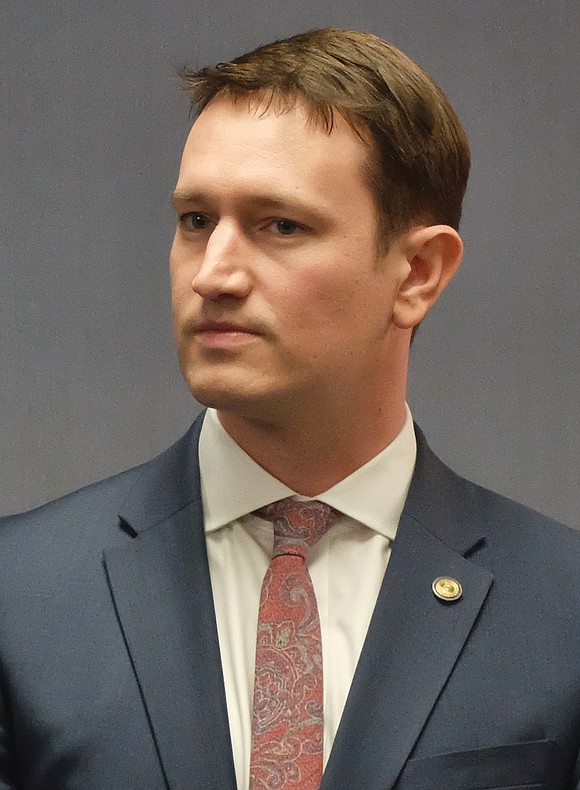VUU’s tower sign stays; scooter rentals advance
Jeremy M. Lazarus | 2/16/2023, 6 p.m.
Virginia Union University can keep its logo shining at night from the top of a historic 60-foot tower on its campus.
City Council voted 9-0 Monday night to approve a special use permit to keep what VUU’s Attorney Dale G. Mullen described as a “beacon of hope” in place.
The sign has been controversial to historic preservation regulators who felt the addition of the lighted VUU sign on top of the tower was a modern touch that should not be allowed.
The university has agreed to pay $30,000 a year to the Virginia Department of Historic Resources to keep the sign up. The payment represents compensation for VUU’s decision to alter the tower without first seeking permission.
The vote for VUU came at a meeting in which the council also voted 9-0 to put in place a a sweeping city plan for tackling climate change without shutting down the city’s natural gas utility.
All nine council members also voted to authorize the city’s administration to proceed to develop an apartment inspection plan, approve moving ahead with the state Department of Transportation to improve pedestrian safety in various parts of the city, and clear the way for expansion of the rental program for electric scooters.
Separately, the council has been notified that the price tag for planned community centers is going up.
For example, the price tag for building a new South Side Community Center has grown to $22 million – or $6 million more than City Hall estimated 16 months ago.
Mr. Saunders disclosed the increase Feb. 6 in response to an inquiry from Council President Michael J. Jones, who represents the 9th District where the center is located.
Back in September 2021, the center was earmarked to receive $16 million to replace a previously demolished portion. That funding was a piece of the $64 million that Mayor Stoney proposed and the council agreed to spend on four com- munity centers.
The approved plan also allocated $20 million for a new indoor center at Lucks Field in Church Hill; $20 million to im- prove and expand the T.B. Smith Center in South Side; and provided $8 million to overhaul the existing Calhoun Center in Gilipin Court, including reopening its long-closed swimming pool.
The money came from the $155 million that Richmond received under President Biden’s American Rescue Plan.
Mr. Saunders responded, “The short answer is yes,” when asked if new cost estimates for the three other centers also are expected to be higher.
He told Dr. Jones that the city would pursue strategies to cut the final projected cost of the South Side center and the other proposed center developments, such as phasing the projects or making changes to materials, size or other parameters in a process called value engineering.
Mr. Saunders said the city also might need to tap the general fund or borrow to fully cover the cost of the South Side center, which is slated to be built first. He told Dr. Jones and the other members that more details would be forthcoming on the administration’s plan to cover the shortfall.








